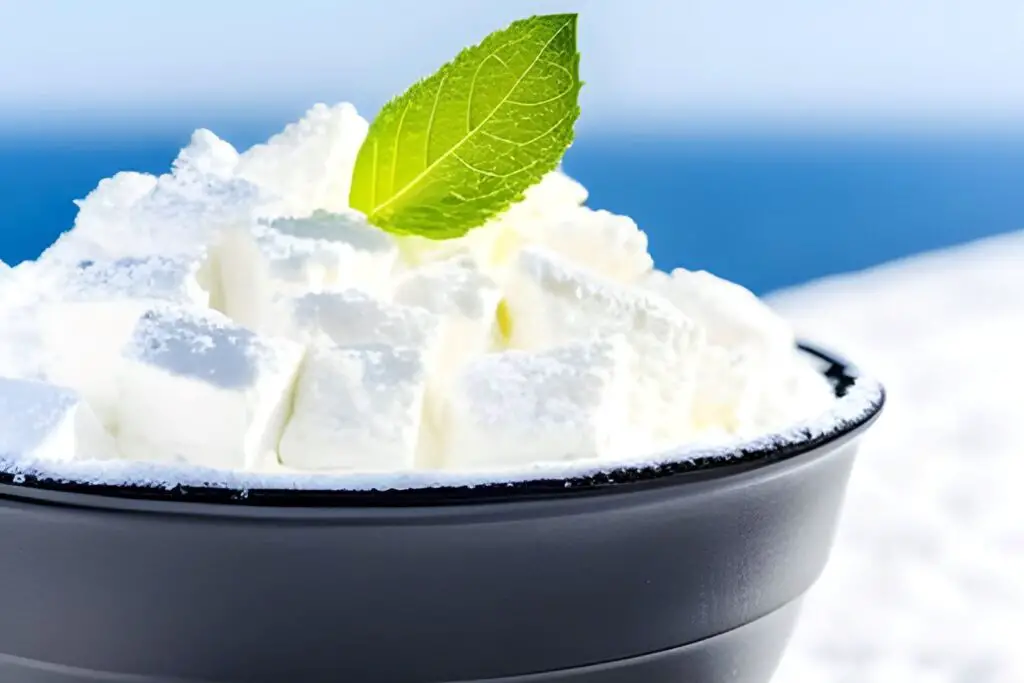
Dairy products, known for their rich and creamy textures, are a staple in many culinary creations and beloved for their versatility and nutritional benefits. From milk and yogurt to cheese and butter, dairy products play a vital role in enhancing the flavors and textures of various dishes. However, if you find yourself with an excess supply of dairy products or want to extend their shelf life, freezing is a fantastic solution. Freezing dairy products helps to preserve their freshness and quality, allowing you to enjoy them at a later time without compromising on taste or texture. In this guide, we will explore the best practices for freezing different dairy products, including proper packaging and storage techniques, so you can confidently freeze your favorite milk, yogurt, cheese, or butter and have them on hand whenever you need them. Join us as we delve into the world of freezing dairy products and discover the convenience of having a well-stocked freezer filled with these essential ingredients, ready to add richness and flavor to your culinary creations.
Here are the simple steps to freeze dairy products:
Step 1: Check the Expiration Date and Quality
Before freezing any dairy product, it’s crucial to assess its expiration date and overall quality. This step is vital to ensure that you are freezing dairy products that are safe to consume and will maintain their desired taste and texture after thawing.
The expiration date indicates the recommended timeframe within which the dairy product should be consumed for optimal quality. If the product has already exceeded its expiration date, it’s best to discard it rather than freeze it. Freezing won’t reverse the spoilage process or improve the quality of dairy products that have already gone bad.
In addition to checking the expiration date, it’s important to examine the overall quality of the dairy product. Look for any signs of spoilage, such as an off smell, unusual texture, mold, or discoloration. These can indicate bacterial growth or degradation of the product. If you notice any of these signs, it’s best to dispose of the dairy product to avoid any health risks or negative effects on taste and texture.
By starting with fresh and good-quality dairy products, you increase the chances of preserving their flavor, texture, and nutritional value through the freezing process. Remember, freezing can help extend the shelf life of dairy products, but it cannot improve their quality if they were already compromised before freezing.
Step 2: Choose Suitable Containers
When it comes to freezing dairy products, selecting the appropriate containers is essential to maintain their quality and prevent freezer burn. Here’s why choosing suitable containers matters:
- Airtight and freezer-safe: Opt for containers that are airtight and specifically designed for freezing. These containers provide a tight seal, preventing air from entering and moisture from escaping. Airtight containers help preserve the flavor, texture, and nutritional value of dairy products by minimizing exposure to oxygen and moisture.
- Withstand low temperatures: Freezer-safe containers are made from materials that can withstand the low temperatures of the freezer without cracking or becoming brittle. Look for containers that are explicitly labeled as freezer-safe to ensure they can handle the extreme cold.
- Prevent contamination: Before using any containers, make sure they are clean and dry. Contaminants, such as residual food particles or liquids, can affect the quality of the dairy products and potentially lead to spoilage or off flavors. Thoroughly wash the containers with warm, soapy water, rinse them well, and allow them to air dry completely before filling them with dairy products.
Choosing suitable containers ensures that the dairy products are adequately protected during freezing, maintaining their freshness and preventing freezer burn. By keeping air and moisture out and using clean containers, you can maximize the shelf life and quality of the dairy products in the freezer.
Step 3: Prepare Milk to Freeze
Freezing milk is a convenient way to extend its shelf life and ensure you always have a supply on hand. However, there are specific steps to follow to freeze milk properly. Here’s how to prepare milk for freezing:
- Account for expansion: Milk expands when frozen, so it’s crucial to leave some extra space in the container to accommodate this expansion. If you’re using a milk carton, pour out a small amount of milk to create enough headspace. This extra room prevents the container from bursting or cracking due to the increased volume as the milk freezes.
- Seal the container tightly: To prevent air from entering and causing freezer burn, ensure the container is tightly sealed. Use airtight, freezer-safe containers or freezer bags designed to keep out moisture and maintain the quality of the milk during freezing. Make sure the lid or closure is secure, or if using a freezer bag, press out any excess air before sealing it.
- Consider portioning: If you anticipate needing smaller portions of milk at a time, it’s beneficial to divide it before freezing. Pour the milk into smaller containers or use ice cube trays to create individual servings. Smaller portions thaw more quickly and allow you to use only the amount you need, reducing waste.
By taking these steps, you can prepare milk for freezing while ensuring it maintains its quality and avoids freezer-related issues. Remember to leave space for expansion, seal the container tightly, and consider portioning if it suits your needs. Properly frozen milk can be stored for several months, giving you the flexibility to have milk readily available whenever you need it.
Step 4: Freeze Yogurt in Individual Servings
When it comes to freezing yogurt, portioning it into individual servings offers several advantages. Here’s why freezing yogurt in individual servings is recommended:
- Convenient serving sizes: Freezing yogurt in individual portions allows for convenient serving sizes. By dividing yogurt into single servings, you can easily thaw and use only the amount you need without having to defrost the entire container. This is particularly useful if you plan to use yogurt in recipes or prefer smaller portions for snacking or breakfast.
- Faster thawing and usage: Freezing yogurt in individual servings reduces thawing time. Smaller portions thaw more quickly than a large container of frozen yogurt. This allows you to grab and thaw only what you need, making it convenient for spontaneous use or when you’re short on time.
- Reduced waste: Portioning yogurt into individual servings helps minimize waste. Instead of thawing a larger container and potentially not using all of it before it spoils, you can thaw and consume yogurt in smaller, manageable portions. This ensures that you’re using yogurt efficiently and reduces the likelihood of leftovers going to waste.
- Headspace for expansion: Similar to freezing milk, it’s important to leave some headspace in the containers when freezing yogurt. As yogurt freezes, it may expand slightly. Leaving room for expansion prevents containers from cracking or bursting due to increased volume.
To freeze yogurt in individual servings, you can use small containers or even ice cube trays. Fill each container or ice cube compartment with the desired amount of yogurt, ensuring you leave some space at the top for expansion. Seal the containers tightly or cover the ice cube trays with plastic wrap or aluminum foil to protect the yogurt during freezing.
Step 5: Prep Cheese to Freeze
When it comes to freezing cheese, it’s crucial to consider the type and texture of the cheese to ensure its quality and prevent undesirable changes during freezing. Here’s how to prep different types of cheese for freezing:
- Hard cheeses (e.g., cheddar, Parmesan): Hard cheeses can be frozen in their whole form. Start by wrapping the cheese tightly in plastic wrap or aluminum foil to prevent moisture loss and protect it from freezer burn. Wrapping it tightly helps to maintain the texture and flavor of the cheese. Next, place the wrapped cheese in a freezer bag, removing as much air as possible before sealing it. The airtight packaging provides an extra layer of protection against freezer burn.
- Soft cheeses (e.g., mozzarella, brie): Soft cheeses are better suited for freezing after being shredded or grated. Freezing soft cheeses in their original form can result in a change in texture and make them crumbly upon thawing. Shredding or grating the cheese before freezing allows for easier portioning and quicker thawing. Portion the shredded or grated cheese into freezer bags or airtight containers, removing as much air as possible to prevent freezer burn.
In both cases, it’s important to remove as much air as possible from the packaging to minimize contact with oxygen, which can cause the cheese to develop off-flavors or become dry. Excess air can also contribute to freezer burn, which negatively impacts the texture and taste of the cheese.
By prepping cheese for freezing based on its type and texture, you can maintain its quality and protect it from moisture loss or freezer burn. Whether you’re freezing hard cheeses in their whole form or shredding soft cheeses before freezing, proper packaging and removal of air will help ensure that the cheese retains its flavor and texture when thawed.
Step 6: Freeze Butter in Convenient Portions
Freezing butter is an excellent way to extend its shelf life and have it readily available whenever you need it. Here’s how to freeze butter in convenient portions:
- Portion the butter: Start by portioning the butter into convenient sizes. You can measure it in tablespoon increments or divide it into sticks, depending on your preferences and how you typically use butter in your recipes. Portioning the butter makes it easier to thaw and use only the amount you need without thawing the entire block.
- Wrap each portion tightly: Individually wrap each portion of butter tightly in plastic wrap or aluminum foil. Wrapping it securely prevents air and moisture from reaching the butter, which can cause it to develop off-flavors or become rancid. Tightly wrapped butter also helps maintain its texture and prevents freezer burn.
- Place in a freezer bag or container: Once each portion of butter is wrapped, place them in a freezer bag or airtight container. Make sure the bag or container is well sealed to prevent any odors from permeating the butter. This will help preserve the flavor and quality of the butter during freezing.
Freezing butter in convenient portions allows for easy portion control and reduces the need to thaw the entire block, especially when you only require a small amount for a recipe. It also helps maintain the freshness and flavor of the butter throughout its time in the freezer.
By freezing butter in convenient portions, ensuring that you always have the right amount on hand for your culinary needs while preserving its freshness and taste.
Step 7: Label and Date
Properly labeling and dating the packages of frozen dairy products is an essential step to maintain organization and ensure the efficient use of your freezer. Here’s why it’s important to label and date the packages:
- Easy identification: Labeling each package with the type of dairy product allows for quick and easy identification. This is especially helpful if you have multiple types of dairy products stored in your freezer. Clear labeling prevents confusion and helps you locate specific items when needed.
- Prioritizing older items: By dating the packages, you can easily identify the products that have been in the freezer the longest. This ensures that you prioritize using older items before their quality starts to decline. Proper rotation helps prevent food waste and ensures you consume the frozen dairy products in a timely manner.
- Maintaining freshness and quality: Dairy products have a limited shelf life even when frozen. Proper labeling and dating enable you to keep track of how long each item has been in the freezer. By using the oldest products first, you can ensure that the dairy products you consume are still at their best quality and flavor.
- Organization and efficiency: Labeling and dating the packages promote a well-organized freezer. When everything is clearly labeled, you can easily find what you need without having to guess or search through multiple containers. This saves time and energy and helps you maintain an efficient storage system.
By consistently labeling and dating your frozen dairy product packages, you can maintain an organized freezer, prioritize the use of older items, and ensure that you consume the dairy products at their peak quality. It’s a simple practice that goes a long way in optimizing your frozen food storage system.
Step 8: Store in the Freezer
After properly preparing and packaging your dairy products for freezing, it’s crucial to store them correctly in the freezer. Here’s how to ensure proper storage:
- Set the freezer temperature: Make sure your freezer is set to a consistent and appropriate temperature for freezing dairy products. Most freezers should be set between 0°F (-18°C) and -10°F (-23°C). This temperature range ensures that the dairy products remain safely frozen, preserving their quality and reducing the risk of bacterial growth.
- Organize the packages: Arrange the packages in an organized manner within the freezer. This helps maximize space utilization and makes it easier to locate specific items when needed. Consider grouping similar dairy products together, such as keeping milk containers in one section and cheese packages in another. By organizing the freezer, you can maintain an efficient storage system.
- Allow space for air circulation: Leave enough space between the packages to allow for proper air circulation. Adequate air circulation helps maintain a consistent temperature throughout the freezer, ensuring that the dairy products freeze evenly and remain frozen. Avoid overcrowding the freezer, as this can hinder proper cooling and lead to temperature fluctuations.
- Minimize temperature fluctuations: Avoid placing dairy products near the freezer door, as this area is more prone to temperature fluctuations when the door is opened frequently. Fluctuating temperatures can negatively affect the quality and texture of the dairy products. Instead, place the dairy products toward the back of the freezer, where the temperature remains more stable.
By storing the dairy products in a properly set freezer and following these storage guidelines, you can maintain the quality and freshness of the frozen dairy products. Remember to periodically check the temperature of your freezer to ensure it remains within the appropriate range.
How long can dairy products last in the freezer?
The shelf life of dairy products in the freezer varies depending on the specific product. Generally, milk can be stored in the freezer for around 3 to 6 months, while yogurt can last for approximately 1 to 2 months. Hard cheeses, like cheddar or Parmesan, can be frozen for 4 to 6 months, and soft cheeses, such as mozzarella or brie, can be stored for 2 to 3 months. It’s important to note that these timeframes are general guidelines, and the quality of dairy products may deteriorate over time even when frozen.
Other related questions
How do you defrost dairy products?
To defrost dairy products, it is recommended to transfer them from the freezer to the refrigerator and allow them to thaw gradually. This method ensures a controlled thawing process, minimizing the risk of bacterial growth. Alternatively, some dairy products like cheese or butter can be thawed at room temperature, but it’s important to monitor them closely to prevent spoilage.
Can you refreeze dairy products?
Refreezing dairy products is generally not recommended. When dairy products are thawed, they undergo changes in texture, flavor, and overall quality. Refreezing can further degrade the quality of the dairy products, leading to potential safety concerns and undesirable taste. It is best to consume thawed dairy products promptly or find alternative uses for them to avoid the need for refreezing.
How do I know if the dairy products have gone bad after being frozen?
After being frozen, dairy products may develop signs of spoilage that indicate they have gone bad. Look for visible changes such as mold growth, unusual discoloration, or an off smell. Check for changes in texture, such as clumping or separation. If any of these signs are present, it is best to discard the dairy product to avoid potential health risks.
Can you freeze dairy products with added flavors or sweeteners?
Yes, you can freeze dairy products with added flavors or sweeteners. Dairy products like ice cream, flavored yogurt, or milkshakes can be frozen for later consumption. However, it’s important to note that the texture and taste may slightly change upon freezing and thawing. Make sure to transfer the dairy product to a freezer-safe container and seal it tightly to prevent freezer burn. When ready to consume, allow the product to thaw in the refrigerator before serving.
Can you freeze dairy products with a low fat or reduced-fat content?
Yes, you can freeze dairy products with a low fat or reduced-fat content. Freezing low fat or reduced-fat dairy products like milk, yogurt, or cheese is a convenient way to extend their shelf life. However, it’s important to note that the texture may change slightly after freezing and thawing, especially with low fat or reduced-fat cheeses.








